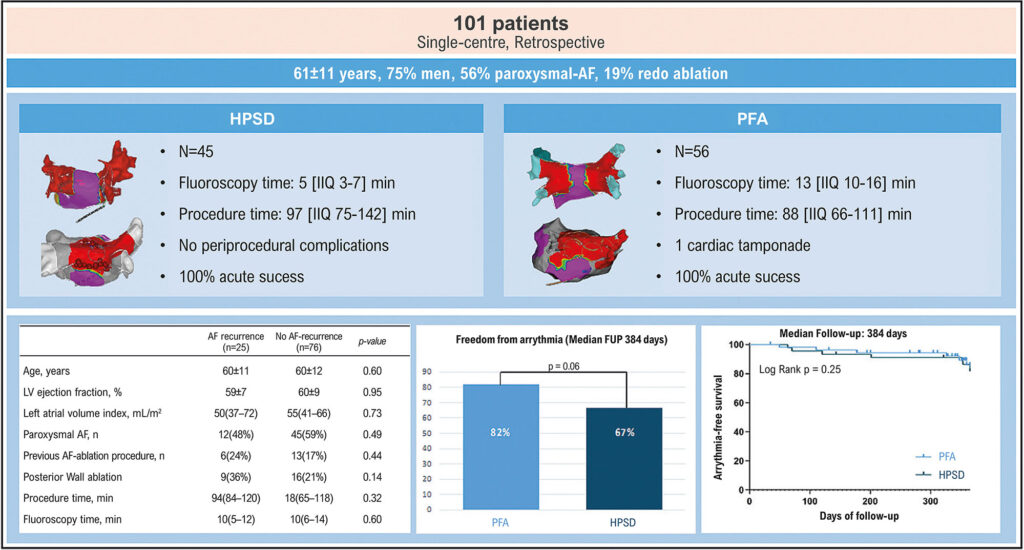Arq. Bras. Cardiol. 2025; 122(2): e20240542
Atrial Fibrillation Catheter Ablation: Electroporation Against High-Power Short Duration Radiofrequency
This Original Article is referred by the Short Editorial "High-Power Short Duration or Pulsed Field Ablation: What is the Best Choice for AF Ablation?".
Abstract
Background
Pulmonary vein isolation (PVI) is crucial in treating symptomatic atrial fibrillation (AF). New ablation technologies, such as pulse-field ablation (PFA) and high-power short-duration (HPSD) have emerged in the electrophysiology lab. However, no study has compared the outcomes of these approaches.
Objective
To compare the efficacy and safety of PFA and HPSD in AF symptomatic patients.
Methods
Single-centre, retrospective study of consecutive patients undergoing PVI with PFA or HPSD between May and December 2022. Demographic data, procedural data, and AF recurrence beyond the blanking period, were analysed. Comparative analysis between both techniques was performed. A P-value of <0.05 was considered statistically significant.
Results
A total 101 patients were included (61±11 years, 75% men); 56% of patients had paroxysmal AF and 19% underwent a redo ablation. Forty-five percent of patients underwent HPSD ablation and 55% PFA. Comparing HPSD and PFA, HPSD had a lower fluoroscopy time (5min [IQR 3-7min]vs 13min [IQR 10-16min], p<0.001), but higher procedure time (97min [IQR 75-142]vs 88min [IQR 66-111], p=0.13). Posterior wall isolation (PWI) was performed in 5 (11%) HPSD vs 20 (36%) PFA patients (p=0.004). There was only one case of major complication, a patient with cardiac tamponade following PFA, who was treated with pericardiocentesis. Over 384 (IQR 341 -545) days of follow-up, 76 patients (75%) were in sinus rhythm, while 25% of patients had AF recurrence: 10 PFA patients and 15 HPSD patients (p=0.06).
Conclusions
Both PFA and HPSD were found to be feasible and safe procedures. PFA resulted in shorter procedure times, and lower AF recurrence rates, mainly when PWI was performed. Although analysis in a real-world scenario is still scarce, both techniques seem to be efficient, with a low AF recurrence rate.
565

